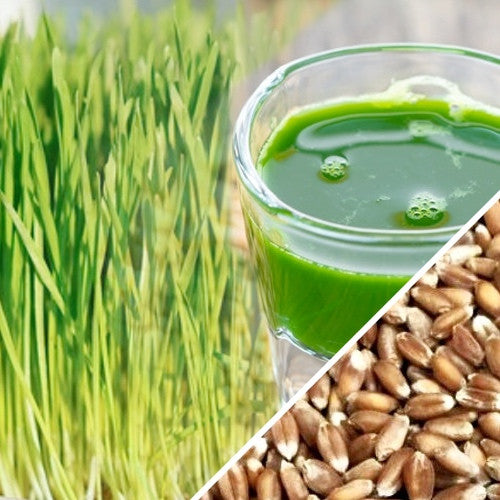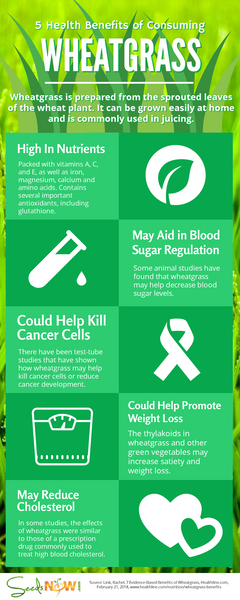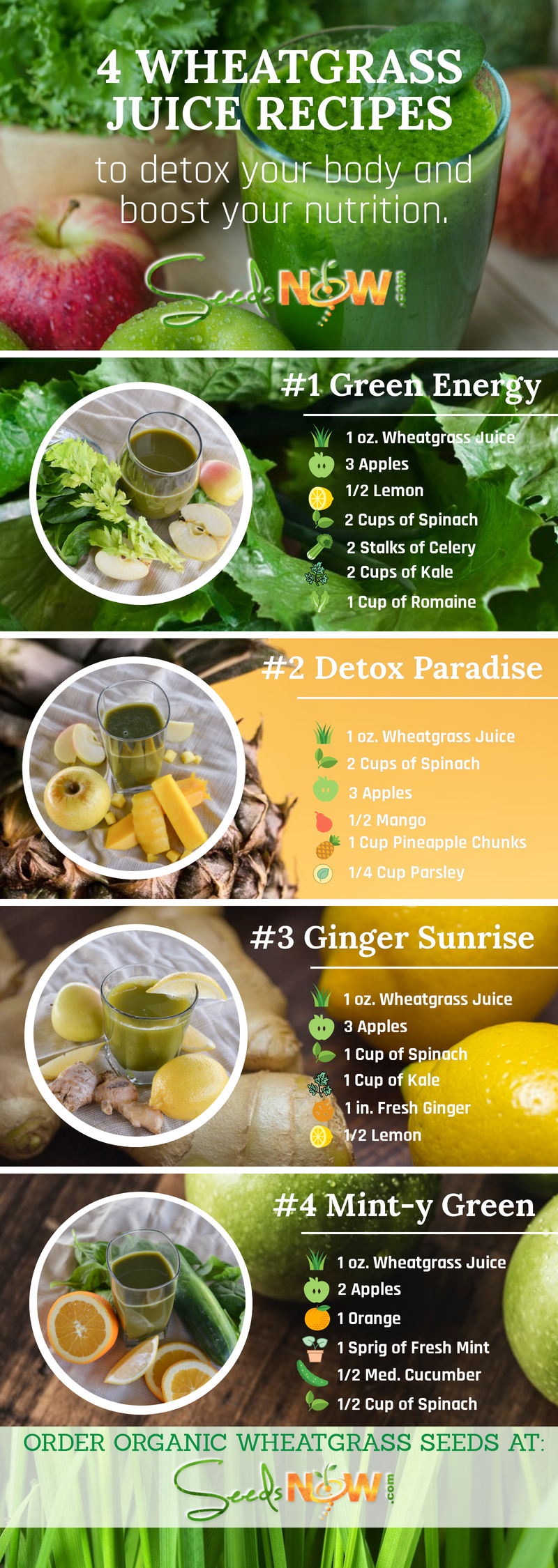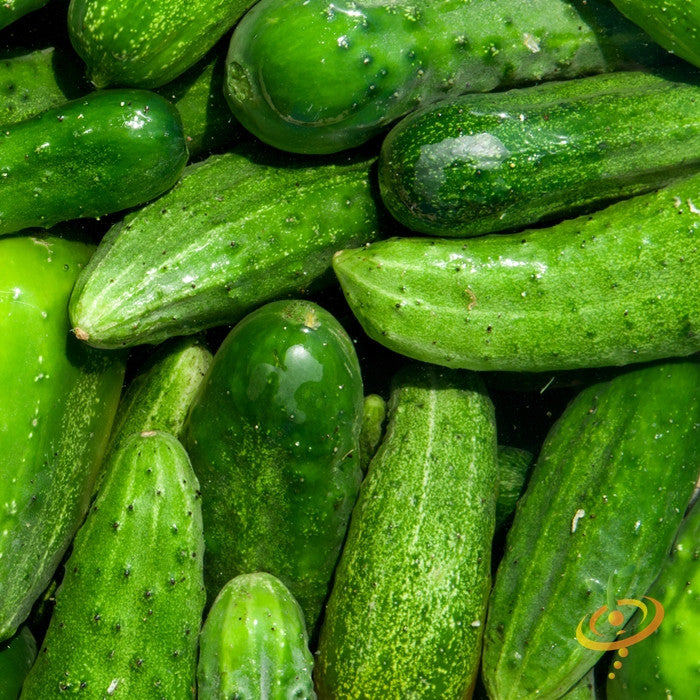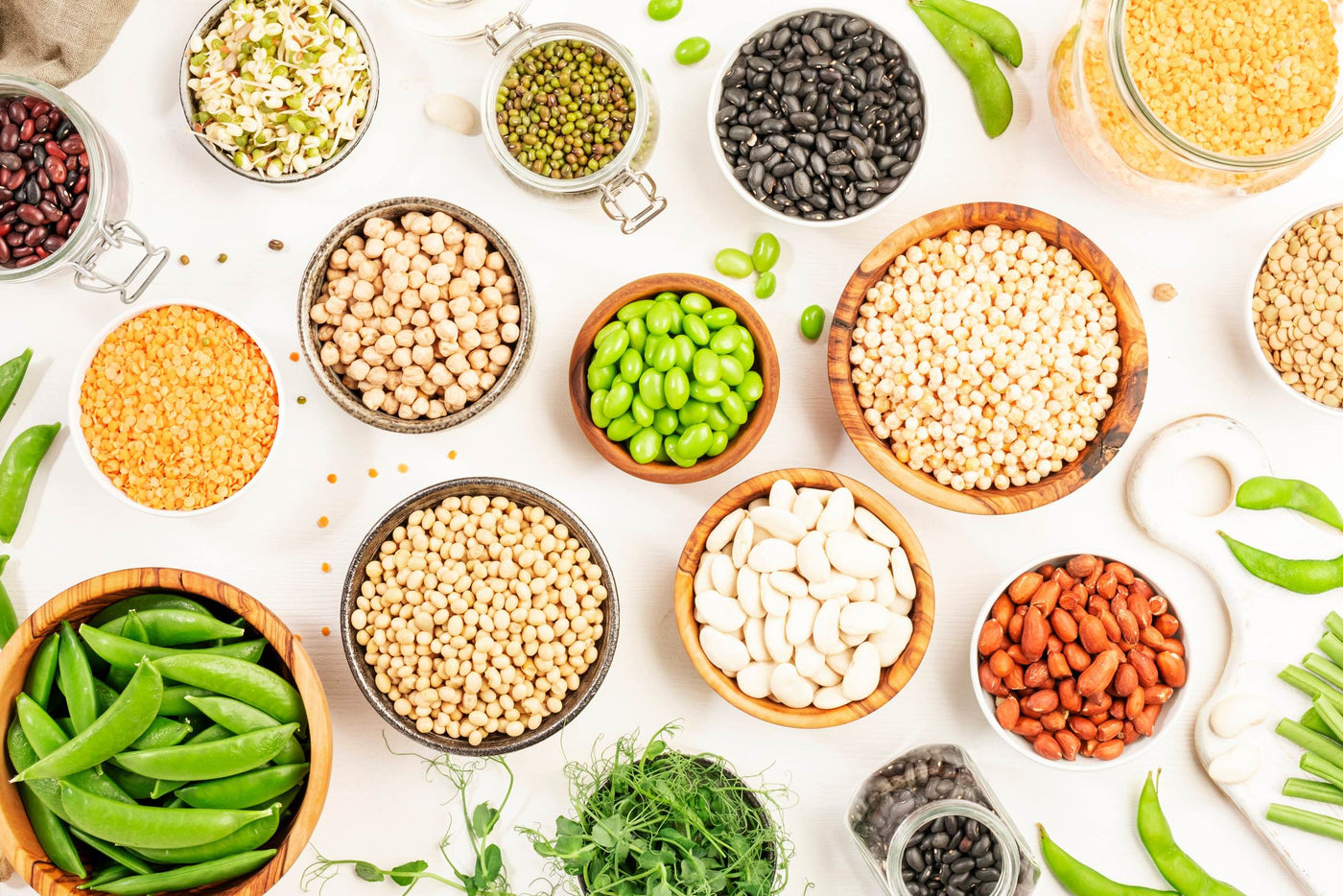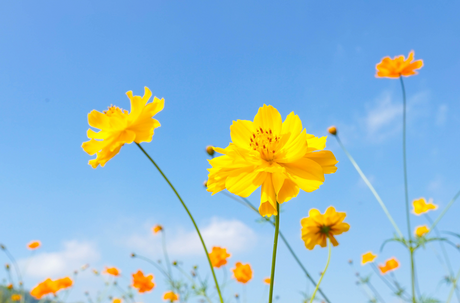- From $199 USDUnit price /Unavailable
Description
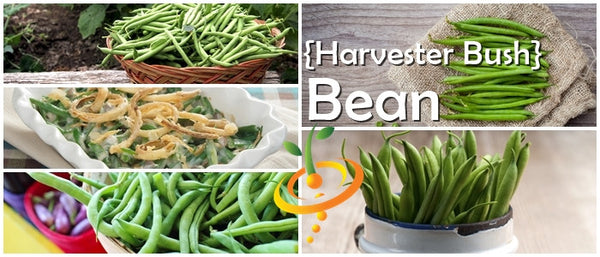
The Harvester Bush Bean grows high off the ground for easy picking. It has excellent flavor from pods that can grow up to 6" long. And you can be enjoying the juicy crunchiness in only 55 days. What’s not to like about this easy string bean?- Easy to grow
- High yielding
- Easy to harvest
- Long, flavorful pods
SEED PLANTING TIPS
- Botanical name: Phaseolus vulgaris
- Depth to plant seeds: 1" deep
- Spacing between plants: 4" apart
- Spacing between rows: 18"-24" apart
- Days to germinate (sprout): 5-10 days
- Germination soil temps: 70F-85F
- Soil needs: 6.0-7.0 pH
- Sun needs: Full sun
- Frost hardy: No
- Planting season: Spring, summer, fall
- # of plants per sq. ft.: Appx. 4 plants per sq. ft.
- Days to maturity: 50-55 days
Good companion plants: Cucumber, Pea, Rosemary, Thyme, Tomato
- From $299 USDUnit price /Unavailable
Description

-
The Muncher cucumber is a delicious variety perfect for munching right out of the garden!
- Excellent flavor and taste
- Medium sized fruits
- Easy to grow
-
Days to Maturity | 60 days
-
Cucumber Seeds | Grow cucumbers where a long, warm growing season, minimum 65 days, can be assured. Plant seeds where there is ample space and vines can sprawl, the simplest way is to plant cucumbers in hills.
Click here for complete Cucumber grow guide
-
The Muncher cucumber is a delicious variety perfect for munching right out of the garden!
- From $299 USDUnit price /Unavailable
Description
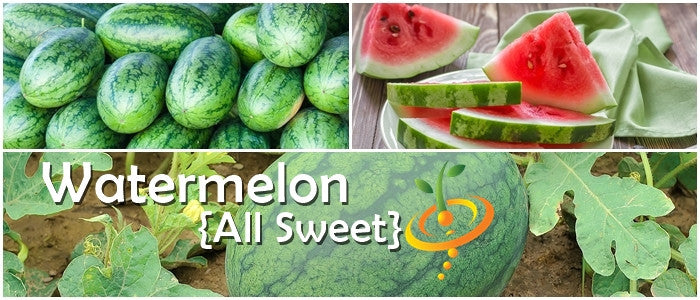
- Plant produces good yields of 25 lb watermelons
- Has bright red flesh
- Perfect for making Watermelon Candy (see how to here)
- Extremely flavorful and extra sweet with a tough rind (helps keep it fruit from bruising)
- Perfect variety for any sized home garden (even market growers)
-
Days to Maturity | 90 days
- Best Months to Plant | [April - June] Watermelons are heat-loving plants that need lots of sun. They grow on a long vine, so make sure to give them plenty of space to roam around.
- Plant produces good yields of 25 lb watermelons
Pepper (Sweet) - Orange Horizon
From $399 USDUnit price /UnavailableDescription

The color orange is located between yellow and red in the spectrum of light, and that’s where you will find the Orange Horizon Pepper. The 4" blocky fruit begins to glow as it ripens and brightens from green to yellow to orange to more orange. Crispy, crunchy, sweet, and juicy with no heat. Locate this one in your garden between the Summer Crookneck Squash and the Beefsteak Tomatoes.
- High yields
- Sweet and juicy
- Harvest any color
- Good fresh and cooked
SEED PLANTING TIPS
- Botanical name: Capsicum annuum
- Pepper size: Large
- Plant support: Tomato cage or stake
- Depth to plant seeds: .25" deep
- Spacing between plants: 18"-24" apart
- Spacing between rows: 24"-36" apart
- Days to germinate (sprout): 7-21 days
- Germination soil temps: 75F-85F
- Soil needs: 6.0-7.0 pH
- Sun needs: Full sun
- Frost hardy: No
- Planting season: Spring, summer
- # of plants per sq. ft.: Appx. 1 plant per 2 sq. ft.
- Days to maturity: 75-80 days
Good companion plants: Basil, Carrot, Cucumber, Eggplant, Okra, Rosemary, Sage, Squash, Tomato
- Large yields of orange sweet peppers that have mild flavor. Thick walls. Easy to grow. Grows well in a 5 gallon container. Perfect for culinary dishes.
- One large bell pepper contains 209 mg of vitamin C, which is almost three times the 70 mg of an average orange.
All Peppers ⟐ Sweet Peppers 📚 Sweet Peppers Grow Guide - From $299 USDUnit price /Unavailable
Description

- The Boltardy Beet is a Detroit-type beet originating from Holland which has a beautiful deep-red, ringless flesh and very smooth skin
- Boltardy Beets are extremely hardy
- Canwithstand cool weather sowing in early spring
- Highly resistant to bolting
-
Day to Maturity | 60 days
- Beet Seeds | Beets are hardy and may be sown as soon as the ground can be worked. Sow seed 1/2 inch deep in rows 12-18 inches apart.
Shop all Beet Seeds 📚 Beets Grow Guide - The Boltardy Beet is a Detroit-type beet originating from Holland which has a beautiful deep-red, ringless flesh and very smooth skin
Melon (Honeydew) - Green Flesh
From $399 USDUnit price /UnavailableDescription

- This is a delicious melon with a sweet green flesh
- Produces large 6 1/2 x 6" melons and weighs about 5 lbs
-
Days to Maturity | 85-100 days
-
Melon Seeds | Because of the long growing season, start plants indoors 4 to 5 weeks before outdoor planting time. Direct sow 4-5 seeds in a hill and then thin to the appropriate spacing.
Click here for complete Melon grow guide
- This is a delicious melon with a sweet green flesh
Tomato - Cherokee Purple (Indeterminate)
From $299 USDUnit price /UnavailableDescription

With deep purple shoulders and a dusky pink body, the Cherokee Purple Tomato is a stunner in the garden. Slice open this beefsteak to reveal red flesh tinged with purple, brown, and green. Low acidity and sweet, slightly smoky flavor has made this a favorite of tomato lovers for more than 130 years. Will this be the year it becomes your favorite?
- Low acidity
- Sweet, smoky flavor
- Thin skin
- Darkens with direct sun exposure
SEED PLANTING TIPS
- Botanical name: Solanum lycopersicum
- Growth type: Indeterminate, trellis support, regular pruning
- Tomato size: Medium
- Depth to plant seeds: .25" deep
- Spacing between plants: 24" apart
- Spacing between rows: 36"-48" apart
- Days to germinate (sprout): 7-14 days
- Germination soil temps: 75F-95F
- Soil needs: 6.0-6.5 pH
- Sun needs: Full sun
- Frost hardy: No
- Planting season: Spring, summer
- # of plants per sq. ft.: Appx. 1 plant per 2 sq. ft.
- Days to maturity: 70-80 days
Good companion plants: Basil, Borage, Onion, Parsley, Pepper
Turnip - Purple Top White Globe
From $299 USDUnit price /UnavailableDescription

- Smooth round roots, 4 to 6 inches across are purple on top and white below
- Flesh is white, mild, and crisp. Stores well
- Extremely healthy and nutritious
- Very easy to grow
- Days to Maturity | 55 days
- Smooth round roots, 4 to 6 inches across are purple on top and white below
- From $399 USDUnit price /Unavailable
Description
Lime Basil is as fresh and uplifting as it sounds. The bright green leaves are infused with a zesty lime fragrance and tangy flavor that’s best used fresh in coconut-heavy Asian dishes, seafood dishes, fruit salads, limeade, cocktails, and salad dressings. Add at the end of cooking to preserve the citrus flavor, then garnish with the edible flowers.
Harvest the leaves and stems from the top part of the plant, and pinch off edible flower buds as they appear, which prevents the leaves from turning bitter, and signals the plant to branch out and grow more leaves, making a bushier plant.
The more you harvest, the more it grows!
- Fresh, zesty lime-anise flavor
- Culinary and medicinal
- Good for indoor gardens
- Good for containers
- Tons of medicinal benefits!
As a medicinal herb, Basil has been used internally to treat anxiety, colds, colic, cough, depression, diarrhea, fever, flatulence, flu, indigestion, insomnia, intestinal parasites and worms, exhaustion, gastric pain, gonorrhea, lactation problems, migraine headache, nausea, stomach cramps, sore throat, and vomiting, and externally to treat acne, insect bites and stings, loss of smell, skin problems, snake bites.
⚠️ Do not use medicinally while pregnant.
⚠️ Medicinal properties are presented as information only, and are not a recommendation or prescription for use. Consult a medical professional before using any herb medicinally.
As a companion plant, it attracts hummingbirds, pollinators, and beneficial insects, and repels asparagus beetles, cabbage moths, cabbage white butterfly, cabbage worms, carrot rust fly, flies, maggots, mice, mosquitoes, spider mites, thrips, and tomato hornworms.
Shop all Basil Seeds Shop Good Companion Plants for Basil 📚 Grow Guide: Basil 
The Lime Basil plant is very easy to grow and smells extremely fragrant! It has an amazing lemon scent, perfect for homemade lemonade! Use this in all your favorite culinary creations! It grows to the perfect size for planting in containers, and the aroma of just passing by this herb, will take your senses on an enjoyable ride.

What is Lime Basil?
Lime Basil offers a crisp citrus flavor, with a zesty undertones. It grows as an annual herb with white or lavender flowers. It has many medicinal purposes which makes it an "all around great herb" to grow in your own gardens.
Health Benefits of Lime Basil
From treating some cancers, symptoms of stress, asthma and diabetes, Lime Basil is recognized widely as a medicinal herb.
Ways to Consume Lime BasilUsed commonly in fresh cooked recipes, always add it at the last moment so that the cooking doesn't destroy the citrus flavor. It is a favorite ingredient in pesto, and used to thicken soups. Try it with fried chicken, or steeping it in milk to create lovely ice creams or chocolates. Don't toss the flower buds, they are full of flavor and are edible as well.
See Basil Recipes & Growing Tips on our Pinterest Board
Shop all Basil Seeds Shop Good Companion Plants for Basil 📚 Grow Guide: Basil - From $399 USDUnit price /Unavailable
Description

-
Has an Oregano-like flavor. It can be used in many dishes including meats, stews, casseroles, poultry, sausages, and sauces
- Can be used dried or fresh. Great flavor and taste
- Marjoram is also known for its healing properties with rheumatoid pain, tension headaches and minor digestive problems
- It can be used in potpourri or added to sachets for linen and clothing cupboards
- Easy to grow in a small container
-
Days to Maturity | 90 days
-
Has an Oregano-like flavor. It can be used in many dishes including meats, stews, casseroles, poultry, sausages, and sauces
Tomato - Pear, Yellow (Indeterminate)
From $299 USDUnit price /UnavailableDescription

We don’t say this about a lot of tomatoes, but the Yellow Pear Tomato really should be grown in every garden. We also don’t say this about a lot of tomatoes: It’s prolific. Ripens loads of lemon-yellow, pear-shaped 1"-2" fruits that are delicious straight off the vine. Keep a few empty bags on-hand to fill up and share these sweet, mild flavor bombs with friends and neighbors.- Very high yields
- Sweet, mild flavor
- Low acidity
- Good for containers
SEED PLANTING INFO
- Botanical name: Solanum lycopersicum
- Growth type: Indeterminate, trellis support, regular pruning
- Tomato size: Small (1"-2")
- Depth to plant seeds: 1/8" deep
- Spacing between plants: 24" apart
- Spacing between rows: 36"-48" apart
- Days to germinate (sprout): 7-14 days
- Germination soil temps: 75F-95F
- Soil needs: 6.0-6.5 pH
- Sun needs: Full sun
- Frost hardy: No
- Planting season: Spring, summer
- # of plants per sq. ft.: Appx. 1 plant per 2 sq. ft.
- Days to maturity: 75-80 days
Click here to view our full Tomato grow guide
Good companion plants: Basil, Borage, Onion, Parsley, Pepper
- From $399 USDUnit price /Unavailable
Description
-
All-America Selections (AAS) Winner
- These seeds will produce 6 inch, slightly tapered and ribbed pods on a beautiful 3 ft. tall plant
- Protect from frost
- Thrives in HOT temperatures
- Best when picked young
- Excellent quality and prolific
-
Days to Maturity | 55 days
Okra Seeds | Sow okra seeds in fertile, nitrogen rich soil. Plant seeds about 12" apart.
Click here for complete Okra grow guide
Additional Details
Okra is often known as "Lady's Fingers" outside of the United States.
-
All-America Selections (AAS) Winner
- From $399 USDUnit price /Unavailable
Description

- Compact butterhead-type lettuce
- Plant produces good yields of medium size greens
- Very hardy
- Perfect for home gardens, containers, raised beds, and hydroponics
-
Days to Maturity | 55 days
-
Lettuce Seeds | Lettuce can be grown practically anywhere. For leaf types seed should be sown thinly in rows 1 foot apart. For head, Bibb, and cos types, space rows 18 inches apart.
Click here for complete Lettuce grow guide
- Compact butterhead-type lettuce
- From $399 USDUnit price /Unavailable
Description

- This is the traditional Collard Green variety popularly grown in the south
- These plants produce large yields of dark blue-green cabbage-like leaves
- Tolerates heat, humidity, and poor soil conditions
-
Days to Maturity | 75 day
-
Collards | Plant seeds 3 to 4 weeks before your first frost for Spring harvest. Sow seeds approximately 12" from one another.
Click here for complete Collards grow guide
Additional Details
Collard is widely considered to be a healthy food, collards are good sources of vitamin C and soluble fiber and contain multiple nutrients with potent anti-cancer properties, such as diindolylmethane and sulforaphane.[citation needed] Roughly a quarter pound (approx. 100 g) of cooked collards contains 46 calories.
- This is the traditional Collard Green variety popularly grown in the south
- From $399 USDUnit price /Unavailable
Description

- Sweet dwarf "snap peas" are great fresh from the garden, with dips and salads. Also great steamed or stir-fried
- Peas grow on 24-30" vines that doesn't need support to grow
- Produces medium sized green peas with 3" pods
- Excellent flavor and easy to grow
-
Days to Maturity | 55-70 days
Pea Seeds | Peas are a cool season vegetable, and do best in a climate where there are two months of cool growing weather, either spring planting in the northern regions or fall planting in the warmer, southern regions. Plant seeds 4"-6" apart.
Click here for complete Pea grow guide
- Sweet dwarf "snap peas" are great fresh from the garden, with dips and salads. Also great steamed or stir-fried
- From $399 USDUnit price /Unavailable
Description

- Extremely tender, medium green leaves are broad and slightly crumpled
- Compact plant forming loose heads of short steamed leaves
- Tolerant of heat and cold and very rich in vitamins and minerals
- The juicy leaves have a mild cabbage-like flavor and are delicious boiled, steamed, or as an addition to salads. 36 inches tall
-
Days to Maturity | 80 days
-
Collards | Plant seeds 3 to 4 weeks before your first frost for Spring harvest. Sow seeds approximately 12" from one another.
Click here for complete Collards grow guide
Additional Details
Collard is widely considered to be a healthy food, collards are good sources of vitamin C and soluble fiber and contain multiple nutrients with potent anti-cancer properties, such as diindolylmethane and sulforaphane.[citation needed] Roughly a quarter pound (approx. 100 g) of cooked collards contains 46 calories.
- Extremely tender, medium green leaves are broad and slightly crumpled
- From $299 USDUnit price /Unavailable
Description

- Plant produces high yields of 5 ½" long orange carrots
- Rarely splits
- Grows well in winter
- Easy to grow
- Perfect for home gardens or market growers
-
Days to Maturity | 70 days
- Carrot Seeds | Carrots are an annual cool-season crop, half-hardy to frost and light freezes. Sow seeds evenly in a very shallow furrow, about 1/4 inch deep, and keep seeds moist so they will germinate.
Click here for complete Carrot grow guide
Additional DetailsCarrot gets its characteristic and bright orange colour from β-carotene, which is metabolised into vitamin A in humans when bile salts are present in the intestines. Carrots are also rich in dietary fibre, antioxidants, and minerals.
- Plant produces high yields of 5 ½" long orange carrots
- From $199 USDUnit price /Unavailable
Description

-
The Cascadia snap pea plant produces 4" long delicious snap peas
- Very flavorful
- Excellent for stir fry
- Plant Height: 32" tall
-
Days to Maturity | 65 days
Pea Seeds | Peas are a cool season vegetable, and do best in a climate where there are two months of cool growing weather, either spring planting in the northern regions or fall planting in the warmer, southern regions. Plant seeds 4"-6" apart.
Click here for complete Pea grow guide
Additional DetailsPeas are high in vitamin A, vitamin C, B vitamins and lutein. Dry weight is about one-quarter protein and one-quarter sugar.
Follow SeedsNow.com's board Peas on Pinterest. -
The Cascadia snap pea plant produces 4" long delicious snap peas
Tomato - Cherry, Chocolate (Indeterminate)
From $299 USDUnit price /UnavailableDescription
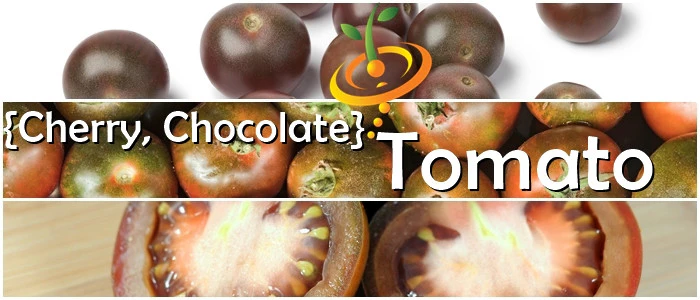
The Chocolate Cherry Tomato may look a bit like chocolate, but it’s all tomato. A very sweet one. If you want to taste for yourself, get to them before the birds do. Through heat and drought, sturdy vines produce generous clusters of uniform, round, 1" fruit with thin skin. If you’ve ever wished that chocolate would grow on trees, keep wishing.
- Sweet, fresh flavor
- Bird magnets
- High yields
- Heat tolerant
SEED PLANTING TIPS
- Botanical name: Solanum lycopersicum
- Growth type: Indeterminate, trellis support, regular pruning
- Tomato size: Small (1" round)
- Depth to plant seeds: 1/8" deep
- Spacing between plants: 24" apart
- Spacing between rows: 36"-48" apart
- Days to germinate (sprout): 7-14 days
- Germination soil temps: 75F-95F
- Soil needs: 6.0-6.5 pH
- Sun needs: Full sun
- Frost hardy: No
- Planting season: Spring, summer
- # of plants per sq. ft.: Appx. 1 plant per 2 sq. ft.
- Days to maturity: 75-80 days
Click here to view our full Tomato grow guide
Good companion plants: Basil, Borage, Onion, Parsley, Pepper
- From $399 USDUnit price /Unavailable
Description

- One of the most popular Oregano varieties. Use fresh or dried in sauces and soups - or any culinary creation
- Days to Maturity | 90 days
Additional DetailsHippocrates used oregano as an antiseptic, as well as a cure for stomach and respiratory ailments. It is still used today in Greece as a palliative for sore throat. Oregano is also high in antioxidant activity, due to a high content of phenolic acids and flavonoids.
- One of the most popular Oregano varieties. Use fresh or dried in sauces and soups - or any culinary creation
- From $399 USDUnit price /Unavailable
Description

- Plant produces high yields of flavorful 8" long orangish red carrots.
- Very popular asian carrot.
- Suitable for home garden or market growers.
- Grows well in raised beds and compact spaces.
-
Days to Maturity | 70 days
- Carrot Seeds | Carrots are an annual cool-season crop, half-hardy to frost and light freezes. Sow seeds evenly in a very shallow furrow, about 1/4 inch deep, and keep seeds moist so they will germinate.
Click here for complete Carrot grow guide
Additional Details
Carrot gets its characteristic and bright orange colour from β-carotene, which is metabolised into vitamin A in humans when bile salts are present in the intestines. Carrots are also rich in dietary fibre, antioxidants, and minerals.
- Plant produces high yields of flavorful 8" long orangish red carrots.
- From $299 USDUnit price /Unavailable
Description
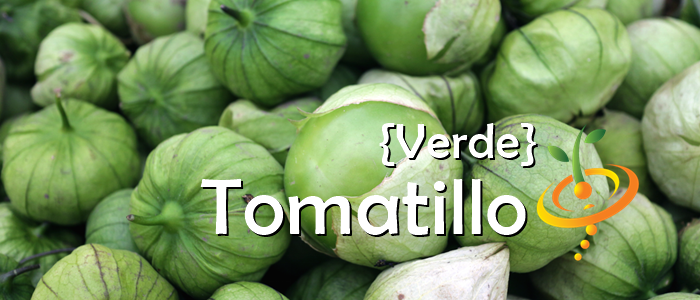
- The Verde Tomatillo plant produces medium 3 ounce fruits
- Tomatillo is popularly used to make salsas
- Days to Maturity | 85 days
- The Verde Tomatillo plant produces medium 3 ounce fruits
Sprouts/Microgreens - Wheat Grass
From $399 USDUnit price /UnavailableDescription
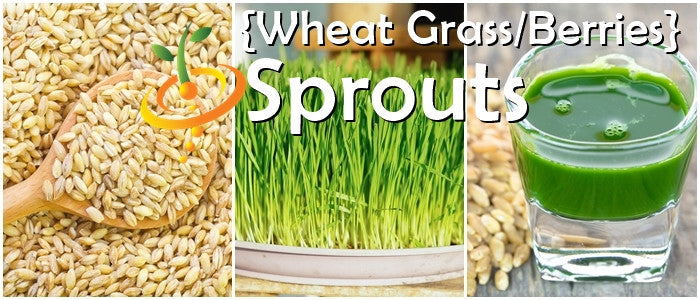 Wheat Grass
Wheat Grass- Wheatgrass is the freshly sprouted first leaves of the common wheat plant, used as a food, drink, or dietary supplement. Like most plants, wheatgrass contains chlorophyll, amino acids, minerals, vitamins and enzymes. Claims about the health benefits of wheatgrass range from providing supplemental nutrition to having unique curative properties.
- Wheatgrass is an excellent source of dietary fiber, just like any whole grains.
- High in folic acid, protein, B-complex vitamins and vitamin E.
- The wheat sprouts are extremely rich in Vitamins A,B, C and E along with other minerals.
-
Day to Sprout | 2-3 days - The wheat grass will be ready to juice in appx. 7 to 10 days
Read: How to Sprout Wheat Berries at Home in a Mason Jar
Read: How to Grow Wheatgrass at Home *Without Soil*
SHIPPING NOTE: This item cannot be shipped to Canada.
- Wheatgrass is the freshly sprouted first leaves of the common wheat plant, used as a food, drink, or dietary supplement. Like most plants, wheatgrass contains chlorophyll, amino acids, minerals, vitamins and enzymes. Claims about the health benefits of wheatgrass range from providing supplemental nutrition to having unique curative properties.
- From $399 USDUnit price /Unavailable
Description

- Mammoth type snow pea with excellent flavor and easy to grow
- Excellent quality, string present as pod matures
- Resistant to Enation Virus, Powdery Mildew and Common Pea Wilt
- Vine height 16-30"
- 4" light green pea pods
-
Days to Maturity | 60 days
Pea Seeds | Peas are a cool season vegetable, and do best in a climate where there are two months of cool growing weather, either spring planting in the northern regions or fall planting in the warmer, southern regions. Plant seeds 4"-6" apart.
Click here for complete Pea grow guide
Additional DetailsPeas are high in vitamin A, vitamin C, B vitamins and lutein. Dry weight is about one-quarter protein and one-quarter sugar.
- Mammoth type snow pea with excellent flavor and easy to grow
Tomato - Beefsteak, Pink (Indeterminate)
From $299 USDUnit price /UnavailableDescription

With its lovely pink hue, the Pink Beefsteak Tomato starts out rather interesting. Add to that a small seed core, hefty 2-3 lb slightly ribbed fruits, and well-balanced flavor, and it becomes very interesting. Delicious too. Use in all your fresh or cooked recipes.- Extra large fruits
- Meaty and mild
- Smooth, even flavor
- High yields
SEED PLANTING TIPS
- Botanical name: Solanum lycopersicum
- Growth type: Indeterminate, trellis support, regular pruning
- Tomato size: Large
- Depth to plant seeds: .25" deep
- Spacing between plants: 24"-36" apart
- Spacing between rows: 36"-48" apart
- Days to germinate (sprout): 7-14 days
- Germination soil temps: 75F-95F
- Soil needs: 6.0-6.5 pH
- Sun needs: Full sun
- Frost hardy: No
- Planting season: Spring, summer
- # of plants per sq. ft.: Appx. 1 plant per 3 sq. ft.
- Days to maturity: 75-85 days
Good companion plants: Basil, Borage, Onion, Parsley, Pepper
- From $299 USDUnit price /Unavailable
Description

- The National Pickling cucumber is an extremely prolific, old-fashioned cucumber variety
- Extremely popular cucumber variety
- Produces 6" long, medium green, with black spines
- Perfect sliced or even for pickling (great for making dill pickles)
- One of the most popular varieties for the home grower
-
Days to Maturity | 55 days
-
Cucumber Seeds | Grow cucumbers where a long, warm growing season, minimum 65 days, can be assured. Plant seeds where there is ample space and vines can sprawl, the simplest way is to plant cucumbers in hills.
Click here for complete Cucumber grow guide
- The National Pickling cucumber is an extremely prolific, old-fashioned cucumber variety
Melon (Cantaloupe) - Hales Best Jumbo
From $399 USDUnit price /UnavailableDescription

- The Hales Best Jumbo is a cantaloupe that yields large, oval, ribbed fruits weighing up to 5 to 6 pounds
- Traditional favorite
- Heavy netting and fine textured with a bright orange flesh
- Holds a sweet flavor longer than most
- Drought tolerant variety that thrives in warm temps
- Excellent source of vitamin C.
-
Days to Maturity | 85-100 days
-
Melon Seeds | Because of the long growing season, start plants indoors 4 to 5 weeks before outdoor planting time. Direct sow 4-5 seeds in a hill and then thin to the appropriate spacing.
Click here for complete Melon grow guide
- The Hales Best Jumbo is a cantaloupe that yields large, oval, ribbed fruits weighing up to 5 to 6 pounds
- From $199 USDUnit price /Unavailable
Description

- This is the most popular large-pod garden shelling pea
- Each plants produce 4"-5" pods with 6-9 large green peas inside
- It is an early producer. Does not require staking
- Easy to grow
- Great flavor and excellent quality
- Days to Maturity | 55 days
Additional DetailsPeas are high in vitamin A, vitamin C, B vitamins and lutein. Dry weight is about one-quarter protein and one-quarter sugar.
- This is the most popular large-pod garden shelling pea
- From $399 USDUnit price /Unavailable
Description

- Little Gem Lettuce is a compact, crisp romaine variety prized for its sweet flavor and exceptional heat tolerance. Growing to just 6-8 inches tall, it forms dense, tightly-wrapped heads with crunchy, juicy leaves. This space-efficient cultivar matures quickly (typically 55-65 days) and performs well in containers or small garden spaces. Plant successively for continuous harvests throughout the growing season.
- Crisp & refreshing, sweet & crunchy lettuce variety.
- The leaves of this particular lettuce makes it idea for use in wraps and hors d'oeuvres.
- Easy to grow in compact spaces and smaller containers.
-
Days to Maturity | 65 days
-
Lettuce Seeds | Lettuce can be grown practically anywhere. For leaf types seed should be sown thinly in rows 1 foot apart. For head, Bibb, and cos types, space rows 18 inches apart.
Click here for complete Lettuce grow guide
- Little Gem Lettuce is a compact, crisp romaine variety prized for its sweet flavor and exceptional heat tolerance. Growing to just 6-8 inches tall, it forms dense, tightly-wrapped heads with crunchy, juicy leaves. This space-efficient cultivar matures quickly (typically 55-65 days) and performs well in containers or small garden spaces. Plant successively for continuous harvests throughout the growing season.
Lettuce - White Boston (Butterhead)
From $399 USDUnit price /UnavailableDescription

-
Lactuca sativa. Compact butterhead-type lettuce
- Plant produces good yields of a light green butter-head type lettuce
- This is a very popular variety because it grows higher off the ground, so the bottom leaves don't rot
- Great for growing in raised beds and containers
- Can tolerate the cold
- Easy to grow
-
Days to Maturity | 45 - 55 days
-
Lettuce Seeds | Lettuce can be grown practically anywhere. For leaf types seed should be sown thinly in rows 1 foot apart. For head, Bibb, and cos types, space rows 18 inches apart.
Click here for complete Lettuce grow guide
-
Lactuca sativa. Compact butterhead-type lettuce
- From $299 USDUnit price /Unavailable
Description

The Ace 55 Tomato is a cultivar known for its consistent production of medium-to-large red tomatoes. This variety is particularly valued for its ability to yield reliable harvests, making it a popular choice among both novice and experienced gardeners. The fruit typically exhibits a robust flavor profile, characterized by low acidity, which enhances its appeal for fresh consumption.
One of the key attributes of the Ace 55 Tomato is its versatility in culinary applications. The tomatoes are best enjoyed fresh, allowing their natural sweetness and hearty flavor to shine. A common recommendation is to incorporate these tomatoes into salads, where they can be paired with fresh basil. This combination not only elevates the dish's flavor but also serves a practical purpose; basil is known for its ability to deter pests such as hornworms, which can be detrimental to tomato plants.
In terms of cultivation, the Ace 55 Tomato thrives in well-drained soil and requires adequate sunlight to reach its full potential. Gardeners should ensure that the plants receive sufficient water, particularly during dry spells, to maintain healthy growth and fruit development. Regular monitoring for pests and diseases is also advisable to ensure a bountiful harvest.
Overall, the Ace 55 Tomato stands out as a reliable and flavorful option for home gardeners looking to enhance their vegetable gardens with quality produce. Its ease of growth and delicious taste make it a worthwhile addition to any garden.
- Good for containers
- Reliable producer
- Low acidity
- Hearty flavor
SEED PLANTING INFO
- Botanical name: Solanum lycopersicum
- Growth type: Determinate, tomato cage support, no pruning
- Tomato size: Medium
- Depth to plant seeds: .25" deep
- Spacing between plants: 24" apart
- Spacing between rows: 36"-48" apart
- Days to germinate (sprout): 7-14 days
- Germination soil temps: 75F-95F
- Soil needs: 6.0-6.5 pH
- Sun needs: Full sun
- Frost hardy: No
- Planting season: Spring, summer
- # of plants per sq. ft.: Appx. 1 plant per 2 sq. ft.
- Days to maturity: 75-80 days
Good companion plants: Basil, Borage, Onion, Parsley, Pepper
- From $399 USDUnit price /Unavailable
Description
Shop all Okra Seeds 📚 Okra Grow Guide 
- The Dwarf Long Green Pod variety produces heavy yields of 8" long by 1 ½" wide dark green okra
This spineless variety produces earlier and higher yields than other varieties
-
Days to Maturity | 50 days
Okra Seeds | Sow okra seeds in fertile, nitrogen rich soil. Plant seeds about 12" apart.
Click here for complete Okra grow guide
Additional Details
Okra is often known as "Lady's Fingers" outside of the United States.
- The Dwarf Long Green Pod variety produces heavy yields of 8" long by 1 ½" wide dark green okra
- From $399 USDUnit price /Unavailable
Description
Dark Opal Purple Basil is a dark, fragrant beauty with its glossy, deep black-purple leaves that shimmer with iridescence in bright light, plum-colored stems, and edible violet flower spikes that make a spectacular garnish. A 1962 All-America Selections Winner! This annual basil plant produces extremely fragrant dark purple leaves. It can be used as a garnish or to make flavored vinegars. This basil drys excellently and is very easy to grow. Gardening in a small space or wanting to use a container? This variety grows great in them!Use it to add sweet, intense anise flavor and a dreamy purple color to pesto or bruschetta, or mix it into a moody Caprese salad with Black Krim Tomatoes.
Harvest the leaves and stems from the top part of the plant, and pinch off edible flower buds as they appear, which prevents the leaves from turning bitter, and signals the plant to branch out and grow more leaves, making a bushier plant.
The more you harvest, the more it grows!
- Sweet, intense anise flavor
- Slow to bolt (flower)
- 1962 All-America Selections (AAS) Winner
- Good for containers
- Tons of medicinal benefits!
As a medicinal herb, Basil has been used internally to treat anxiety, colds, colic, cough, depression, diarrhea, fever, flatulence, flu, indigestion, insomnia, intestinal parasites and worms, exhaustion, gastric pain, gonorrhea, lactation problems, migraine headache, nausea, stomach cramps, sore throat, and vomiting, and externally to treat acne, insect bites and stings, loss of smell, skin problems, snake bites.
⚠️ Do not use medicinally while pregnant.
⚠️ Medicinal properties are presented as information only, and are not a recommendation or prescription for use. Consult a medical professional before using any herb medicinally.
Plant Basil in your garden to attract hummingbirds, pollinators, and other beneficial insects.
Basil is also know to repel aphids, asparagus beetles, cabbage moths, cabbage white butterfly, cabbage worms, carrot rust fly, flies, maggots, mice, mosquitoes, spider mites, thrips, and tomato hornworms!

What is Dark Opal Purple Basil?
This sweet and very popular variety of basil has gorgeous purple-black glossy foliage and a delicious aroma. It's eye catching and a beautiful, colorful garden plant. This basil produces small to medium sized, tender leaves. It is slow to bolt and grows at a steady pace. The dark purple has a green metallic undertone or sheen and in bright light it can appear flat and open.
Health Benefits of Dark Opal Purple BasilDark Opal Purple Basil has a variety of medicinal benefits and has been known to improve digestive functions, treat acne and insect bites, improve nausea, and work as a sedative for muscle spasms and cramps.

Ways to Consume Dark Opal Purple BasilLike many basil varieties, Dark Opal Purple Basil has a degree of licorice flavor, and it is used in the culinary world as an attractive garnish with good flavor. Use this herb fresh or dried and even frozen. It works wonderfully in salads and on sandwiches. The uses for this herb are endless and everyone should take advantage of this fresh and spicy leaf.

See Basil Recipes & Growing Tips on our Pinterest Board
Shop all Basil Seeds Shop Good Companion Plants for Basil 📚 Grow Guide: Basil - From $399 USDUnit price /Unavailable
Description
- These New Zealand spinach seeds will produce very flavorful medium triangular-shaped green spinach leaves
- This is one of the few spinach varieties that produces continuously all year, from spring to fall. The more you cut and use the more it will continue to grow
- New Zealand spinach is a large growing plant and needs 2 foot rows, 1 foot between plants
- And ... unlike the other spinach varieties, the New Zealand is one that can survive through the hot summers
-
Days to Maturity | 75 days
- These New Zealand spinach seeds will produce very flavorful medium triangular-shaped green spinach leaves
Tomato - San Marzano (Indeterminate)
From $299 USDUnit price /UnavailableDescription
Can a tomato be a celebrity? Ask the San Marzano Tomato—if you can get past its bodyguards. One commercial grower proclaims it the “gold standard for taste.” Martha Stewart devoted an entire blog post to it. Certified tomatoes from Italy are regulated. It even has its own Wikipedia page. But at the end of the day, it’s still just a tomato. One that’s longer and thinner than other plum/paste tomatoes, with exceptional tomato flavor, meaty and thin skinned for slicing, few seeds and fleshy for saucing, and very high yields. We’ve joined the fan club. How about you?
- Sweet, intense flavor
- Very high yields
- Compact plant
- Good fresh or cooked
SEED PLANTING TIPS
- Botanical name: Solanum lycopersicum
- Growth type: Indeterminate, trellis support, regular pruning
- Tomato size: Medium
- Depth to plant seeds: .25" deep
- Spacing between plants: 24" apart
- Spacing between rows: 36"-48" apart
- Days to germinate (sprout): 7-14 days
- Germination soil temps: 75F-95F
- Soil needs: 6.0-6.5 pH
- Sun needs: Full sun
- Frost hardy: No
- Planting season: Spring, summer
- # of plants per sq. ft.: Appx. 1 plant per 2 sq. ft.
- Days to maturity: 75-90 days
Click here to view our full Tomato grow guide
Good companion plants: Basil, Borage, Onion, Parsley, Pepper
Squash (Summer) - Scallop, Golden Bush
From $399 USDUnit price /UnavailableDescription

- One of the most popular and rare heirloom Squash varieties
- Grows as a compact bush size plant (not as a vine)
- Produces 4-5" golden-yellow fruits
- Grow well in small spaces
- These plants grow continuously over a long season
- Days to Maturity | 65 days
Additional DetailsThough considered a vegetable in cooking, botanically speaking, squash is a fruit (being the receptacle for the plant's seeds). Squash can be served fresh (in salads) and cooked (squash stuffed with meat, fried squash, baked squash).
- One of the most popular and rare heirloom Squash varieties
Pepper (Hot) - Habanero, Orange 🔥🔥🔥🔥
From $499 USDUnit price /UnavailableDescription
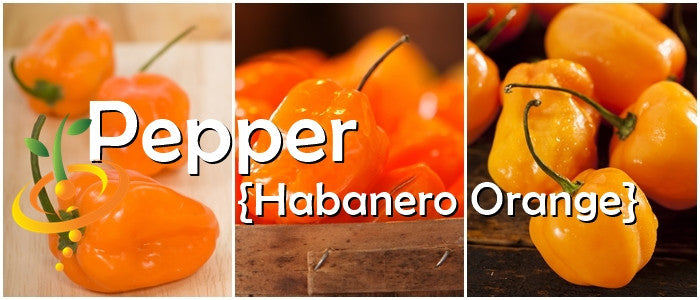
The Orange Habanero Pepper is the kind of pepper that makes you want to check your garden several times a day to see how orange it can get. Very. The kind of pepper that makes you wonder if you can add it to a dish with all orange ingredients like chorizo, carrots, and sweet potatoes. Yes. Or how about with apricots and cantaloupe? Not as hot as other habanero peppers.- Very high yields
- Fruity, citrusy, smoky flavor
- Hot enough to make a lion yelp
- Good for containers
SEED PLANTING TIPS
- Botanical name: Capsicum chinense
- Pepper length: 1"-2"
- Scoville heat units (SHU): 200,000-300,000/very hot
- Plant support: Tomato cage or stake
- Depth to plant seeds: .25" deep
- Spacing between plants: 18"-24" apart
- Spacing between rows: 24"-36" apart
- Days to germinate (sprout): 10-30 days
- Germination soil temps: 75F-85F
- Soil needs: 5.0-6.0 pH
- Sun needs: Full sun
- Frost hardy: No
- Planting season: Spring, summer
- # of plants per sq. ft.: Appx. 1 plant per sq. ft.
- Days to maturity: 85-105 days
Good companion plants: Basil, Carrot, Cucumber, Eggplant, Okra, Rosemary, Sage, Squash, TomatoAll Peppers ⟐ Hot Peppers 📚 Hot Peppers Grow Guide - From $399 USDUnit price /Unavailable
Description

Evergreen Parsley Seeds
(100% Heirloom/Non-Hybrid/Non-GMO)- Dark green curly parsley leaves.
- Can withstand frost and cooler temps better than the other varieties.
- Use this parsley for garnishing, and culinary decoration.
-
Day to Maturity | 70 days
- Planting Guide | Sow directly in your garden and space seeds 7" apart. Seeds can take a while to sprout. Can take 3-4 weeks before seedlings appear. Plant will grow to about 10" tall in about 60 days.

Additional DetailsParsley is a commonly grown culinary and medicinal herb that is often used as a domestic medicine. The fresh leaves are highly nutritious and can be considered a natural vitamin and mineral supplement in their own right. The plants prime use is as a diuretic where it is effective in ridding the body of stones and in treating jaundice, dropsy, cystitis etc. It is also a good detoxifier, helping the body to get rid of toxins via the urine and therefore helping in the treatment of a wide range of diseases such as rheumatism
- Dark green curly parsley leaves.
- From $399 USDUnit price /Unavailable
Description

The Borlotti Bush Bean (Phaseolus vulgaris) is an old Italian heirloom, also known as the Cranberry Bean. With its vibrant crimson streaks, the beautiful pods are easy to spot in the garden. Can be eaten as a green bean, or dried and used like its relative the kidney bean.
- Easy to grow
- High in fiber
- Matures quickly—55 days
- Good as a dried bean
Shop all Bean Seeds Shop Good Companion Plants for Beans 📚 Grow Guide: Beans - From $399 USDUnit price /Unavailable
Description

- Luffa Gourds are an all-time favorite variety for many gardener's
- If you know what a gourd is and you like to use a luffa then you're going to love growing your own
-
You can grow your own luffa gourds and do all these great things with them: exfoliate skin; make your own luffa slippers for the beach; use it to scrub glassware & non-stick pans
- Luffa Gourds are an all-time favorite variety for many gardener's
Pepper (Hot) - Anaheim Chili 🔥
From $499 USDUnit price /UnavailableDescription

The Anaheim Chili Pepper is really quite mild. About one kick up from a bell pepper. This California native is called Hatch when grown in New Mexico and Seco del Norte when dried. Loads of long 6"-10" tapered peppers ripen from grassy green to forest to smoky red. Thick-skinned and fleshy, tangy and sweet, tasty when fresh or cooked into meat. Try chiles rellenos or corn chowder, or make it Seco and grind into powder.
- High yields
- Sweet and tangy
- Harvest any color
- Good fresh, cooked, and dried
SEED PLANTING TIPS
- Botanical name: Capsicum annuum
- Pepper length: 6"-10"
- Scoville heat units (SHU): 500-2,500/mild
- Plant support: Tomato cage or stake
- Depth to plant seeds: .25" deep
- Spacing between plants: 18"-24" apart
- Spacing between rows: 24"-36" apart
- Days to germinate (sprout): 7-21 days
- Germination soil temps: 75F-85F
- Soil needs: 6.0-7.0 pH 5-6 habanero
- Sun needs: Full sun
- Frost hardy: No
- Planting season: Spring, summer
- # of plants per sq. ft.: Appx. 1 plant per 2 sq. ft.
- Days to maturity: 75-80 days
Good companion plants: Basil, Carrot, Cucumber, Eggplant, Okra, Rosemary, Sage, Squash, Tomato
All Peppers ⟐ Hot Peppers 📚 Hot Peppers Grow Guide - From $399 USDUnit price /Unavailable
Description
Lemon Basil, also called Hoary Basil (for its fuzzy stems), is a hybrid cross between traditional basil and lime basil.The bright green leaves have a sweet lemony aroma and a tangy lemon-anise flavor that’s best used fresh in seafood dishes, fruit salads, lemonade, cocktails, and salad dressings. Add at the end of cooking to preserve the citrus flavor, then garnish with the edible flowers.
Harvest the leaves and stems from the top part of the plant, and pinch off edible flower buds as they appear, which prevents the leaves from turning bitter, and signals the plant to branch out and grow more leaves, making a bushier plant.
The more you harvest, the more it grows!
- Tangy lemon-anise flavor
- Culinary and medicinal
- Good for indoor gardens
- Good for containers
- Tons of medicinal benefits!
As a medicinal herb, Basil has been used internally to treat anxiety, colds, colic, cough, depression, diarrhea, fever, flatulence, flu, indigestion, insomnia, intestinal parasites and worms, exhaustion, gastric pain, gonorrhea, lactation problems, migraine headache, nausea, stomach cramps, sore throat, and vomiting, and externally to treat acne, insect bites and stings, loss of smell, skin problems, snake bites.
⚠️ Do not use medicinally while pregnant.
⚠️ Medicinal properties are presented as information only, and are not a recommendation or prescription for use. Consult a medical professional before using any herb medicinally.
As a companion plant, Basil attracts hummingbirds, pollinators, and beneficial insects, and repels asparagus beetles, cabbage moths, cabbage white butterfly, cabbage worms, carrot rust fly, flies, maggots, mice, mosquitoes, spider mites, thrips, and tomato hornworms.
Shop all Basil Seeds Shop Good Companion Plants for Basil 📚 Grow Guide: Basil Health Benefits of Lemon Basil
Basil is a known health tonic for expecting mothers and when mixed with tea it increases lactation in mothers. It is also a nerve tonic and young children are sometimes encouraged to chew on the leaves of basil because it stimulates brain cells and can increase memory.

See Basil Recipes & Growing Tips on our Pinterest Board
Shop all Basil Seeds Shop Good Companion Plants for Basil 📚 Grow Guide: Basil Pepper (Hot) - Serrano Tampiqueno 🔥🔥
From $399 USDUnit price /UnavailableDescription

The Serrano Tampiqueño Pepper “from the mountains” of Mexico opens up new vistas of heat and flavor. The prolific plant tolerates heat and drought, pushing out loads of 2"-3" cylindrical fruits with colors that range from from grassy green to fizzy orange to berry red, and are spicy at every mesa. Use to add flavor, heat, and syllables to pizza tampiqueño, salsa tampiqueño, steak tampiqueño, or pickles tampiqueño, or dry them and tampi into a queño.- Very high yields
- Heat tolerant
- Harvest any color
- Good for containers
SEED PLANTING TIPS
- Botanical name: Capsicum annuum
- Pepper length: 2"-3"
- Scoville heat units (SHU): 10,000-20,000/medium
- Plant support: Tomato cage or stake
- Depth to plant seeds: .25" deep
- Spacing between plants: 18"-24” apart
- Spacing between rows: 24"-36" apart
- Days to germinate (sprout): 7-21 days
- Germination soil temps: 75F-85F
- Soil needs: 6.0-7.0 pH
- Sun needs: Full sun
- Frost hardy: No
- Planting season: Spring, summer
- # of plants per sq. ft.: Appx. 1 plant per sq. ft.
- Days to maturity: 75-80 days
Good companion plants: Basil, Carrot, Cucumber, Eggplant, Okra, Rosemary, Sage, Squash, Tomato
All Peppers ⟐ Hot Peppers 📚 Hot Peppers Grow Guide - From $399 USDUnit price /Unavailable
Description

- Winter Density lettuce is known to be heat and frost tolerant - ideal for growing all season long
- Needs cold temps to germinate but will continue to grow all-season
- Dark green leaves grow over 9" long
- Similar to Romaine lettuce and Butterhead lettuce
-
Days to Maturity | 30 days (small head of lettuce) to 60 days (full head head of lettuce)
-
Lettuce Seeds | Lettuce can be grown practically anywhere. For leaf types seed should be sown thinly in rows 1 foot apart. For head, Bibb, and cos types, space rows 18 inches apart.
Click here for complete Lettuce grow guide
- Winter Density lettuce is known to be heat and frost tolerant - ideal for growing all season long
- From $399 USDUnit price /Unavailable
Description
Hybrid

Mint, Peppermint- Peppermint is typically used in teas, jellies, deserts, and salads.
- Extremely fragrant.
- Sweet smelling.
- Acts as a natural wasp repellant.
- Perennial.
- Can be used as a garnish on ice cream and drinks.

Click here to see 7 Awesome Mint Drink Recipes HERE
Follow SeedsNow.com's board Mint on Pinterest.
- Peppermint is typically used in teas, jellies, deserts, and salads.
- From $399 USDUnit price /Unavailable
Description

Anise (Pimpinella anisum), also called Aniseed, is a sweet, aromatic annual in the parsley family.
The leaves and flowers are lacy, delicate, and delicious, and plants can grow 2'-3' tall.
With a fresh licorice flavor, use as you would Tarragon and Fennel in both savory meat and vegetable dishes, salads and dressings, and sweet baked goods, such as biscotti.
Chew the seeds for a natural breath freshener and digestif. Its aromatic seeds are also used for cooking and herbal medicine.
You may be familiar with the anise flavor if you've had absinthe, as anise seeds are the basis for this famous alcoholic beverage.
- Licorice flavor
- Edible seeds and leaves
- Culinary and medicinal
- Good for containers
As a companion plant, it attracts pollinators and beneficial insects, and repels aphids, cabbage moths, cabbage white fly, cabbage worms, slugs, and snails, but is strangely irresistible to bears, deer, dogs, and mice.
As a medicinal herb, Anise has been used internally to treat bad breath, bloating, constipation, cough, flatulence, hot flashes, indigestion, lack of appetite, migraine headaches, and upset stomach, and externally to treat bronchitis, eye pain, and swelling.
⚠️ Medicinal properties are presented as information only, and are not a recommendation or prescription for use. Consult a medical professional before using any herb medicinally.
Pepper (Sweet) - Chocolate Bell
From $299 USDUnit price /UnavailableDescription
The Chocolate Bell Pepper is a fun one to grow. While the skin is maturing from green to brown, the inside is ripening from green to red, so you’re in for a surprise color combo with each one you snip off the vine. Crunchy and sweet with no heat. Ripens early, too. Pair with Chocolate Cherry Tomatoes on a bed of Red Romaine Lettuce for a delightful dark salad.- High yields
- Early producer
- Harvest any color
- Sweet and crunchy
SEED PLANTING TIPS
- Botanical name: Capsicum annuum
- Pepper size: Medium
- Plant support: Tomato cage or stake
- Depth to plant seeds: .25" deep
- Spacing between plants: 18"-24" apart
- Spacing between rows: 24"-36" apart
- Days to germinate (sprout): 7-21 days
- Germination soil temps: 75F-85F
- Soil needs: 6.0-7.0 pH
- Sun needs: Full sun
- Frost hardy: No
- Planting season: Spring, summer
- # of plants per sq. ft.: Appx. 1 plant per 2 sq. ft.
- Days to maturity: 65-80 days
Good companion plants: Basil, Carrot, Cucumber, Eggplant, Okra, Rosemary, Sage, Squash, Tomato
- Plant produces good yields of beautiful rich chocolate-brown sweet bell pepper
- Excellent for salads, stuffing, or cooking
- Very easy to grow
- Grows well in containers and tight spaces
- A must for the gourmet home gardener
All Peppers ⟐ Sweet Peppers 📚 Sweet Peppers Grow Guide Cauliflower - Snowball/Self-blanche (White)
From $399 USDUnit price /UnavailableDescription

- The Self-Blanche Cauliflower produces flavorful snow ball type cauliflower
- Plant early as it stops growing when it gets hot
- The leaves curl upward and cover head to keep sun from ruining white color
-
Days to Maturity | 65 days
-
Cauliflower Seeds | Cauliflower is an annual cool-season crop, half-hardy to frost and light freezes. Plant in rows 2 1/2 to 3 feet apart, with 2 feet between plants.
Click here for complete Cauliflower grow guide
- The Self-Blanche Cauliflower produces flavorful snow ball type cauliflower
Basil, Cinnamon (Mexican Basil)
From $399 USDUnit price /UnavailableDescription
Cinnamon Basil, also called Mexican Basil, has glossy, deep green leaves that turn reddish at the tips when mature, and dark cinnamon-colored stems. Its warm, sweet cinnamon-anise flavor is especially nice in ham and pork dishes, apple pie and other desserts, and kombucha.
By far the most popular variety and possibly one of the most fragrant, this basil grows easily. Its aroma will remind you of sweet cinnamon and it is popular for use in hot drinks and paired with fresh fruit.
This sweet basil is exotic and has dark green leaves with purplish-red stems and purple blooms. It's spicy and has a cinnamon-like taste and scent. If you like making homemade potpourris or dried flower arrangements try adding some cinnamon basil!The violet flower spikes make an unusual garnish or addition to salads. Harvest the leaves and stems from the top part of the plant, and pinch off edible flower buds as they appear, which prevents the leaves from turning bitter, and signals the plant to branch out and grow more leaves, making a bushier plant.
The more you harvest, the more it grows!
- Cinnamon-anise flavor
- Tons of medicinal benefits!
- Good for indoor gardens
- Good for containers
As a medicinal herb, Basil has been used internally to treat anxiety, colds, colic, cough, depression, diarrhea, fever, flatulence, flu, indigestion, insomnia, intestinal parasites and worms, exhaustion, gastric pain, gonorrhea, lactation problems, migraine headache, nausea, stomach cramps, sore throat, and vomiting, and externally to treat acne, insect bites and stings, loss of smell, skin problems, snake bites.
⚠️ Do not use medicinally while pregnant.
⚠️ Medicinal properties are presented as information only, and are not a recommendation or prescription for use. Consult a medical professional before using any herb medicinally.
Plant Basil in your garden to attract hummingbirds, pollinators, and other beneficial insects.
Basil is also know to repel aphids, asparagus beetles, cabbage moths, cabbage white butterfly, cabbage worms, carrot rust fly, flies, maggots, mice, mosquitoes, spider mites, thrips, and tomato hornworms!
Shop all Basil Seeds Shop Good Companion Plants for Basil 📚 Grow Guide: Basil Health Benefits of Cinnamon Basil
Cinnamon basil is a must have, medicinal herb. It offers anti-inflammatory benefits and can relieve symptoms of arthritis! If you suffer from allergies, diabetes, colds, the flu, or infertility, some would swear by the benefits of consuming cinnamon basil and how it's improved their health. It is even used in the treatment of some cancers. It naturally boosts your immune system and is a known anti-bacterial and anti-viral. Are you growing this yet?...because you should be!

Ways to Consume Cinnamon BasilUse this exotic and fragrant basil in any recipe that calls for basil. The sweet flavor is great when paired with other fruity herbs. Pick the leaves when small and tender and use them in your favorite recipes or put them in bottles of olive oil to make cinnamon flavored oil. Cinnamon basil pairs harmoniously with apple pie filling, apple sauce, pork or ham dishes. Add frozen basil leaves to soups or sauces. Cinnamon basil can also be used to make refreshing teas, hot or cold!


See Basil Recipes & Growing Tips on our Pinterest Board
Shop all Basil Seeds Shop Good Companion Plants for Basil 📚 Grow Guide: Basil Eggplant - Long Purple Italian
From $399 USDUnit price /UnavailableDescription

- This all-time classic favorite eggplant produces club shaped fruits that are 10" long x 2" in diameter
- Each plant will produce four or more dark, purple fruits
-
Days to Maturity | 75 days
-
Eggplant Seeds | Start seed indoors to allow at least 10 weeks for young plants to develop. Plant in rows 3 feet apart, with 2 feet between plants.
Click here for complete Eggplant grow guide
- This all-time classic favorite eggplant produces club shaped fruits that are 10" long x 2" in diameter
🌱 Featured Seed Types (A - Z)
View allcontinue shopping





















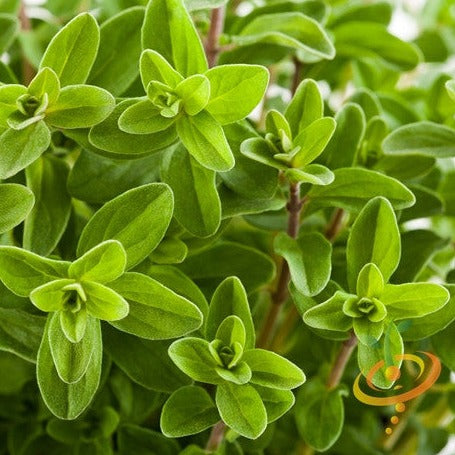


![Tomato - Pear, Yellow [INDETERMINATE].](http://www.seedsnow.com/cdn/shop/products/Tomato_-_Pear_Yellow_seeds.jpg?v=1624931855&width=460)
























